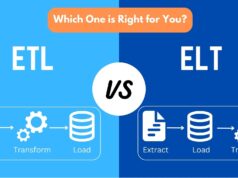Market Development Funds (MDF) are a vital component in the collaborative efforts between business and channel partners, aimed at amplifying sales and expanding market reach. These funds are pivotal for businesses striving to gain a competitive edge in an evolving ecosystem. Maximizing the utility of MDF can catalyze a business’s growth trajectory, making a comprehensive understanding of these funds not just beneficial but crucial for businesses intent on bolstering their marketing efforts and driving sales.
Understanding MDF
Market Development Funds reimburse partners to execute training, marketing or sales activities that drive more sales.. The purpose of MDF is to empower these partners to perform at their best, fostering a symbiotic relationship that enhances brand awareness and stimulates market expansion. For those seeking to navigate the complexities of these funds, WorkSpan offers an MDF guide to explain this and other forms of partner incentive funds, providing a valuable resource for maximizing the use of MDF.
Qualifying for MDF
To tap into MDF, prospective partners must navigate a set of criteria and requirements, which typically include sales performance metrics, marketing capabilities, and alignment with the vendor’s strategic goals. Qualification often involves presenting a robust marketing plan and demonstrating the potential for a strong return on investment. Tips for meeting these qualifications include staying abreast of the company’s objectives, maintaining transparent communication, and showcasing previous marketing successes.
Benefits of Utilizing MDF

Leveraging MDF can provide businesses with a springboard for growth by supplementing marketing budgets, enabling more aggressive campaign executions, and facilitating market entry. These funds can support a variety of initiatives, from advertising to product demonstrations or events to even training programs for sales staff. Success stories and statistics affirm that businesses that effectively utilize MDF often see a significant uptick in leads, sales, and market presence. Furthermore, these funds can help forge new partnerships and channels, fostering a network that supports sustainable growth and broadens the business’s footprint in the market.
MDF Usage Guidelines
To effectively harness MDF, businesses should adhere to best practices like devising clear marketing strategies, aligning initiatives with company goals, and ensuring compliance with program stipulations. The importance lies in the strategic allocation of these funds towards activities with measurable outcomes, maintaining brand consistency, and fostering open communication with vendors to ensure mutual benefit and compliance with MDF guidelines. Timely application and judicious use of funds, coupled with a focus on collaborative promotion efforts, are crucial for leveraging these resources to their full potential.
Maximizing ROI with MDF
Strategies for optimizing ROI with MDF include targeting high-potential markets, leveraging analytics to inform decisions, and meticulously planning marketing activities. It’s essential to focus on campaigns that directly contribute to sales growth. Practical examples, such as targeted advertising campaigns or trade show participation, can illustrate the effective use of MDF in driving significant returns. Additionally, investing MDF in training partner sales teams or in co-marketing efforts can amplify the impact of these funds, resulting in a robust sales pipeline and improved brand loyalty.
Tracking and Reporting

Effective monitoring and measurement of MDF initiatives are critical to demonstrating their impact and securing ongoing funding. Businesses should adopt reliable tools or methodologies for tracking MDF expenditures and results. This could involve using software that specializes in partner relationship management or marketing performance analytics to provide tangible evidence of the success of MDF-funded activities. Systematic tracking also aids in recognizing which strategies yield the best outcomes, thus informing future marketing investments and fostering an environment of continuous improvement.
Common Pitfalls to Avoid
Businesses frequently encounter pitfalls such as misaligned strategies, inadequate planning, and poor communication with vendors. To avoid these, it is essential to develop a thorough understanding of the company’s objectives, create detailed marketing proposals, and maintain regular reporting. These measures help in avoiding misunderstandings and misapplication of funds, ensuring the MDF are used efficiently and effectively. Furthermore, it’s important to schedule regular audits of MDF activities to ensure alignment with both partners’ evolving goals and market dynamics.
Building Strong Partner Relationships
Collaboration and synergy with partners are paramount in MDF programs. Nurturing these relationships entails regular communication, shared goals, and mutual respect. This collaboration can lead to better alignment on marketing campaigns, more innovative ideas, and ultimately, a stronger market presence. Tips for maintaining healthy partnerships include regular engagement, transparent sharing of data and performance metrics, and recognizing and respecting each partner’s unique contributions. Joint planning sessions and collaborative analytics can deepen these relationships, creating a more cohesive and unified approach to the market.
Creating Effective MDF Campaigns

Crafting successful MDF campaigns involves strategic planning, an understanding of the target market, and aligning with partners’ objectives. It requires a mix of creativity and analytics: identifying the most impactful marketing channels, crafting compelling messaging, and setting clear metrics for success. Successful MDF campaigns have clarity in purpose, targeted reach, and measurable outcomes, ensuring that every dollar spent is an investment toward measurable growth in a changing business partner ecosystem. These campaigns should also be dynamic, allowing for agility and adaptation to market responses in real time.
Case Studies
Companies that have harnessed the full potential of MDF often share common traits: strategic insight, innovative marketing approaches, and strong partner relationships. These businesses not only align MDF activities with overarching goals but also track performance diligently to iterate and improve. Their strategies often include targeting untapped markets, personalizing campaigns for specific segments, and leveraging data analytics to refine marketing tactics. These firms excel by systematically reviewing campaign performance, enabling them to pivot as needed and capitalize on emerging market opportunities swiftly.
Conclusion and Takeaways
Understanding and maximizing MDF benefits is a multifaceted process, necessitating strategic planning, precise execution, and continuous optimization. By absorbing the insights and tips discussed, businesses can elevate their MDF initiatives, ensuring these funds act as a catalyst for growth and success. The critical takeaway is the symbiotic relationship between business partners, where alignment and shared objectives pave the way for mutual benefits and expanded market influence.















